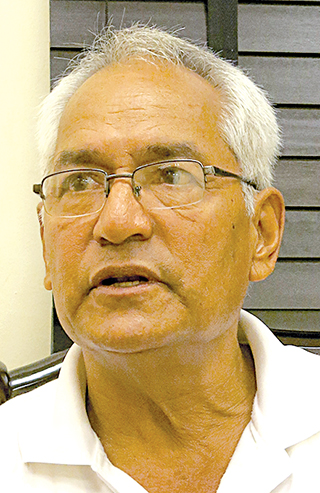Expert not stopping after finding Buddha's birthplace
Published on: Sunday, May 15, 2016

Kota Kinabalu: The archaeologist who stumbled upon the exact birth spot of Prince Siddharta Gautama (Lord Buddha) is now involved in unearthing other key sites related to the life of Buddhism's founder and immediate family in his native Nepal."Archaeological sites are everywhere in Nepal," said Dr Basanta Kumar Bidari (pic), who in 1996 discovered the ancient marker stone which denoted the spot of Buddha's birth in 563BC. He said there were hints previously of where the exact spot might be based on clues inscribed on a pillar erected by King Asoka some 2,000 years ago. However, it was the written testimonies of Chinese travellers Fa Hsien and Xuan Zang that conclusively helped to narrow the spot.
ADVERTISEMENT
Excavation work began at the site under the auspices of the Japan Buddhist Federation, Nepal's Department of Archaeology and the Lumbini Development Trust.He said when the work began in 1992, he did not expect that it would lead to the momentous discovery four years later."I trembled when it was confirmed at a conference," said Dr Basanta, 60.In fact, the greatest moment in his 30-year career happened by chance when he tried to find a way to dislodge thick roots of a tree belonging to the banyan family from damaging the area that was buried underneath it.
ADVERTISEMENT
Here on the invitation of the Buddhist Missionary Society Malaysia, Sabah branch, Dr Basanta said there are also important Buddhist sites waiting to be discovered, including in Malaysia.He cited the discovery of the "Kedah Buddha" in Kedah's historic Bujang Valley.
ADVERTISEMENT
"It is a small bronze standing Buddha discovered by a British archaeologist couple in 1941," he said.Dr Basanta until his retirement was the Chief Archaeologist for Lumbini, Kapilavastu and Devadaha which are historical sites associated with the Buddha.The Lumbini Archaeology Park has two archaeological sites, namely Lord Buddha's birthplace and Lumbini Village where people used to come and stay. The sites are 400 metres apart."Lumbini is where the Buddha was born and Kapilavastu is the place where Buddha was raised and lived until the age of 29 while Devadaha is the maternal home of Buddha. "Rupandehi alone, which is one of the 74 districts in Nepal, has 62 archaeological sites," Dr Basanta said when met at the KK Tzer Ying Buddhist Temple at Bukit Padang, here.Lumbini is a world-renowned Buddhist pilgrimage destination and a Unesco World Heritage site since 1997.Stay up-to-date by following Daily Express’s Telegram channel.
Daily Express Malaysia




